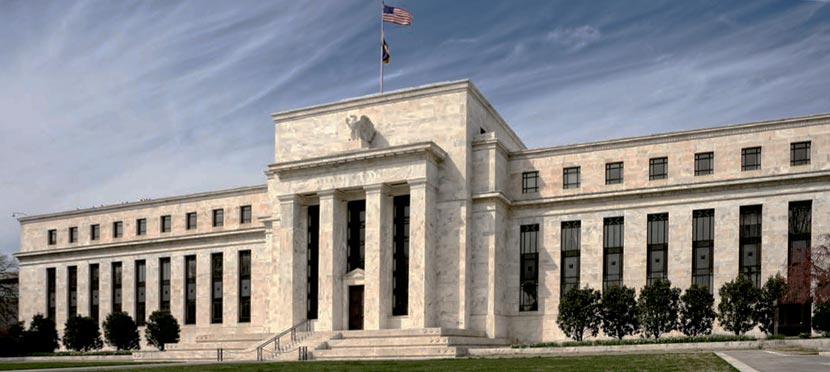Time for the FED to shrink it’s balance sheets which has grown from US$800 billion in 2006 to about US$4.5 trillion now, according to Federal Reserve Bank of St. Louis President James Bullard, in an article in the second quarter 2017 issue of The Regional Economist.
As a consequence of the financial crisis, Great Recession of 2007-09 and sluggish economy that persisted for several years beyond that, the Federal Open Market Committee (FOMC) took extraordinary actions to stimulate the economy and promote the recovery. By December 2008, for instance, the FOMC had reduced the federal funds rate target (i.e., the policy rate) to near zero—exhausting its conventional monetary policy tool. With the economy still weak and to guard against deflation, the FOMC turned to unconventional monetary policy, including three rounds of large-scale asset purchases from late 2008 to late 2014. The purchases were primarily of longer-term Treasuries and mortgage-backed securities. This policy, better known as quantitative easing (QE), led to an expansion of the Fed’s balance sheet.
Fast forward to today. The Fed’s goals for employment and inflation have essentially now been met. The FOMC’s focus has shifted to monetary policy normalization, including increasing the policy rate, which it has done three times since December 2015. With this return to more conventional monetary policy now underway, the question of how and when to begin normalizing the Fed’s balance sheet is timely.
As a result of the three QE programs, the Fed’s balance sheet increased from about $800 billion in 2006 to about $4.5 trillion today. The FOMC’s reinvestment policy, which includes replacing maturing securities with new securities, is keeping the balance sheet at its current size. If the FOMC wanted to begin shrinking the balance sheet, the most natural step would be to end the reinvestment policy. Ending reinvestments would lead to a gradual reduction in the size of the balance sheet over several years.
In recent months, I have been an advocate of ending reinvestments for two main reasons. One is that current monetary policy is distorting the yield curve. While actual and projected increases in the policy rate are putting upward pressure on short-term interest rates, maintaining a large balance sheet is putting downward pressure on medium- and long-term interest rates. Of course, interest rates are volatile and are affected by many factors, but raising the policy rate would normally tend to raise interest rates all along the yield curve. Therefore, a more natural way to normalize interest rates would be to allow all of them to increase together.
My second argument for ending reinvestments is to allow for more balance-sheet “policy space” in the future. In other words, the FOMC should begin reducing the balance sheet now in case it needs to add to the balance sheet during a future recession. If, at that time, the policy rate is once again reduced to zero, the FOMC may want to consider using QE again. By having a smaller balance sheet in that situation, the FOMC would have more “policy space” to buy assets, if necessary.
Although I am in favor of ending reinvestments, some may argue that the “taper tantrum” of the summer of 2013 calls for caution in doing so. The FOMC’s QE3 program was ongoing at that time, and the taper tantrum was related to communications about the pace of asset purchases. In May of that year, then-Chairman Ben Bernanke commented to a congressional committee that he thought the pace of asset purchases might be slowed at future meetings. That message was reinforced by the results of the June meeting, when the FOMC authorized Bernanke to announce a road map for a possible decision to begin tapering later in the year. Financial markets viewed this announcement as relatively hawkish and reacted accordingly. (For example, longer-term U.S. interest rates increased.) At the September meeting, the FOMC postponed the decision, which financial markets viewed as relatively dovish. When the FOMC finally decided in December to begin tapering the pace of asset purchases, global financial markets did not react very much.
In my view, the taper tantrum was a communications issue—not an issue about actual changes in the size of the balance sheet. Similarly, communication will be important in the current situation. If the FOMC properly communicates the end of the reinvestment policy, I would expect the experience to be similar to December 2013, when there was no appreciable impact on global financial markets because they had already anticipated the changes in the Fed’s policy.
Some have suggested waiting to end the reinvestment policy until the FOMC has decided on the final size of the balance sheet. But few would argue that today’s $4.5 trillion is appropriate in the long run.2 Given that balance sheet normalization will take years, the FOMC could continue to debate the final size after reinvestment ends. In my view, it would be prudent to begin shrinking the balance sheet and making progress toward the eventual goal. The balance sheet policy was designed to cope with a near-zero policy rate, but now that the policy rate has increased, having such a large balance sheet is less critical.

